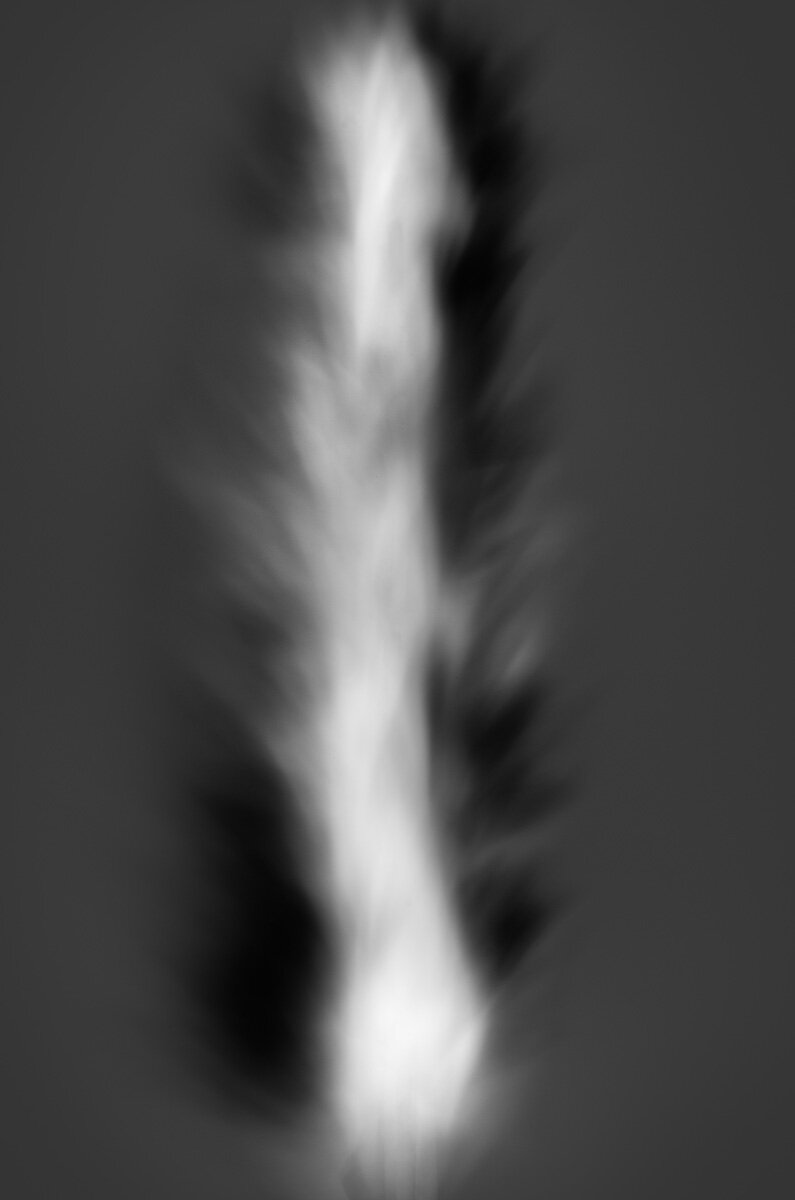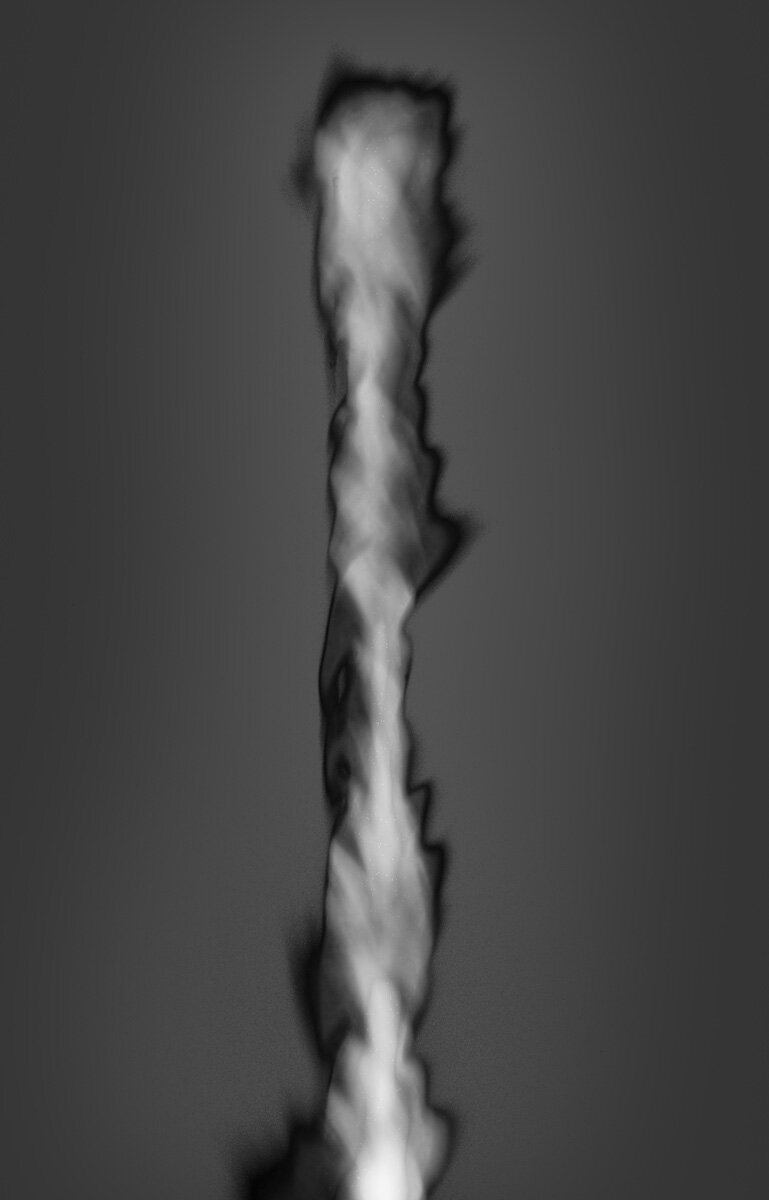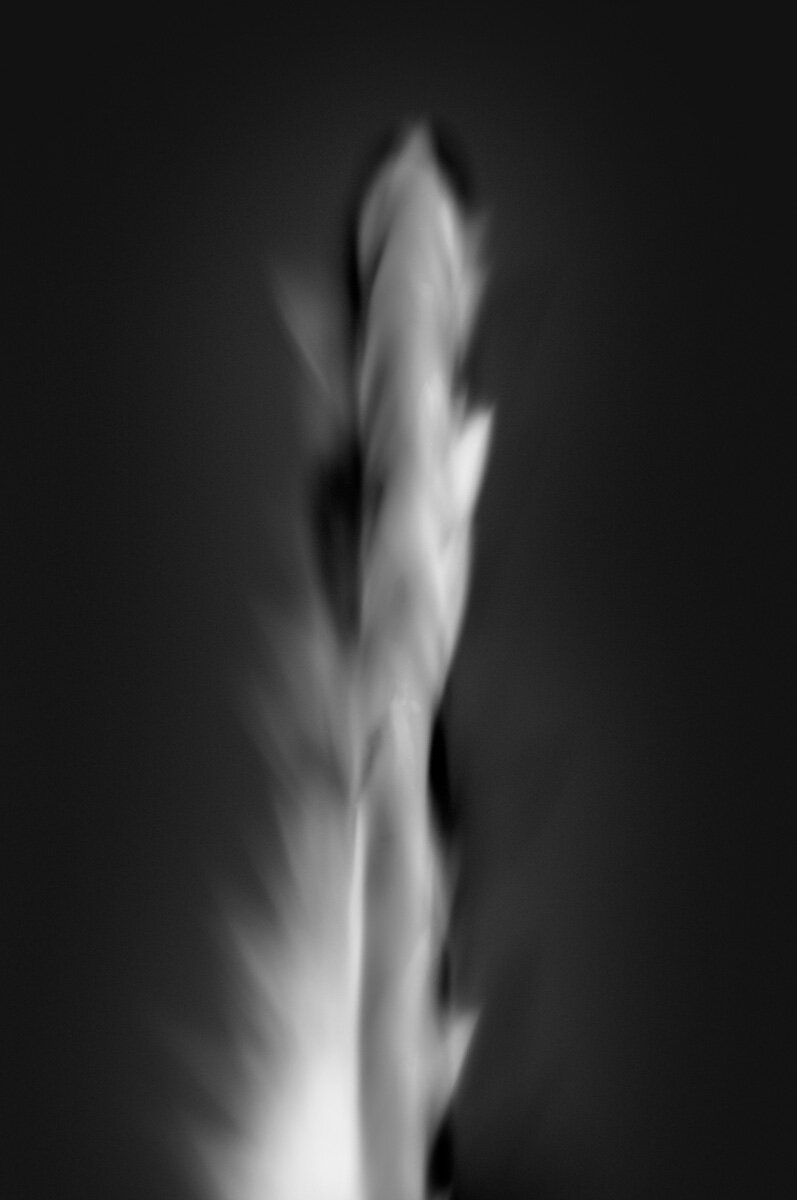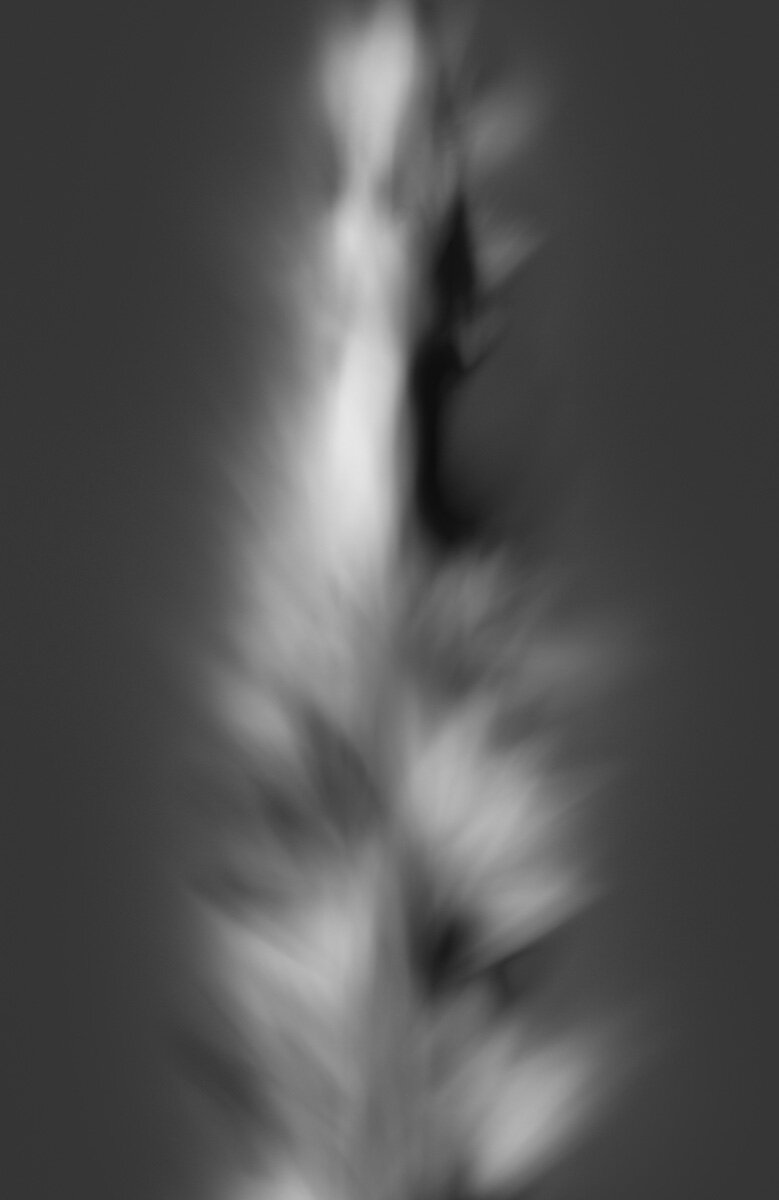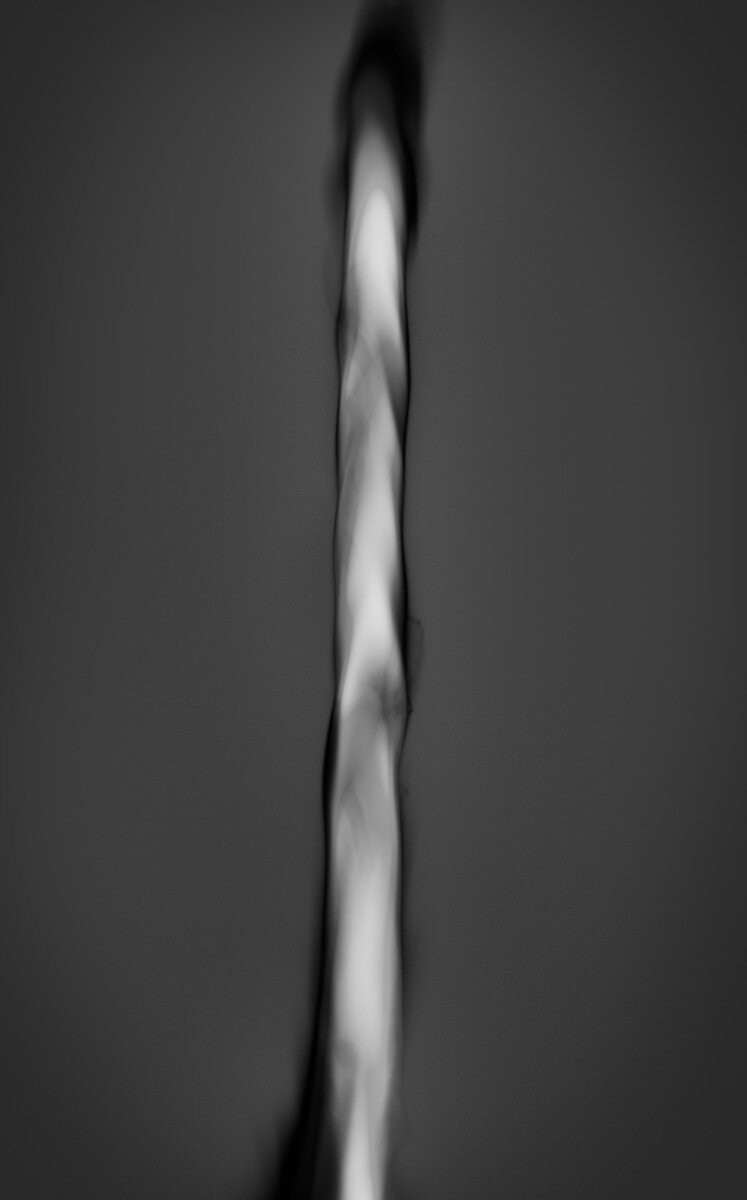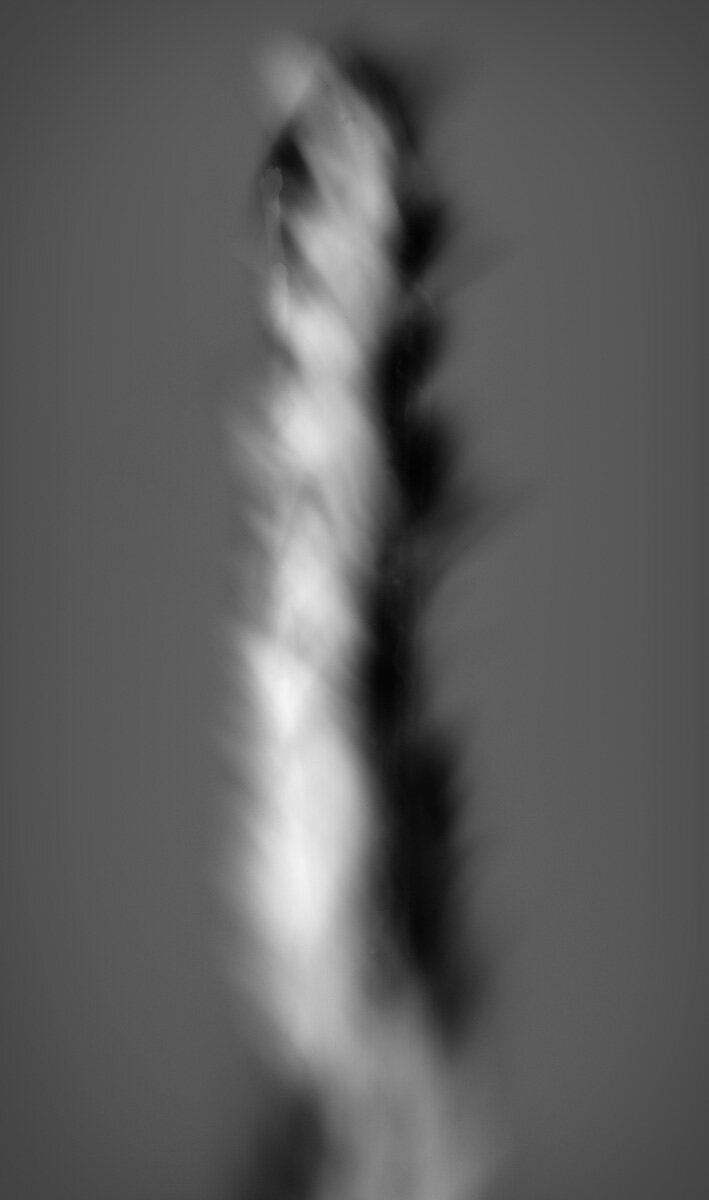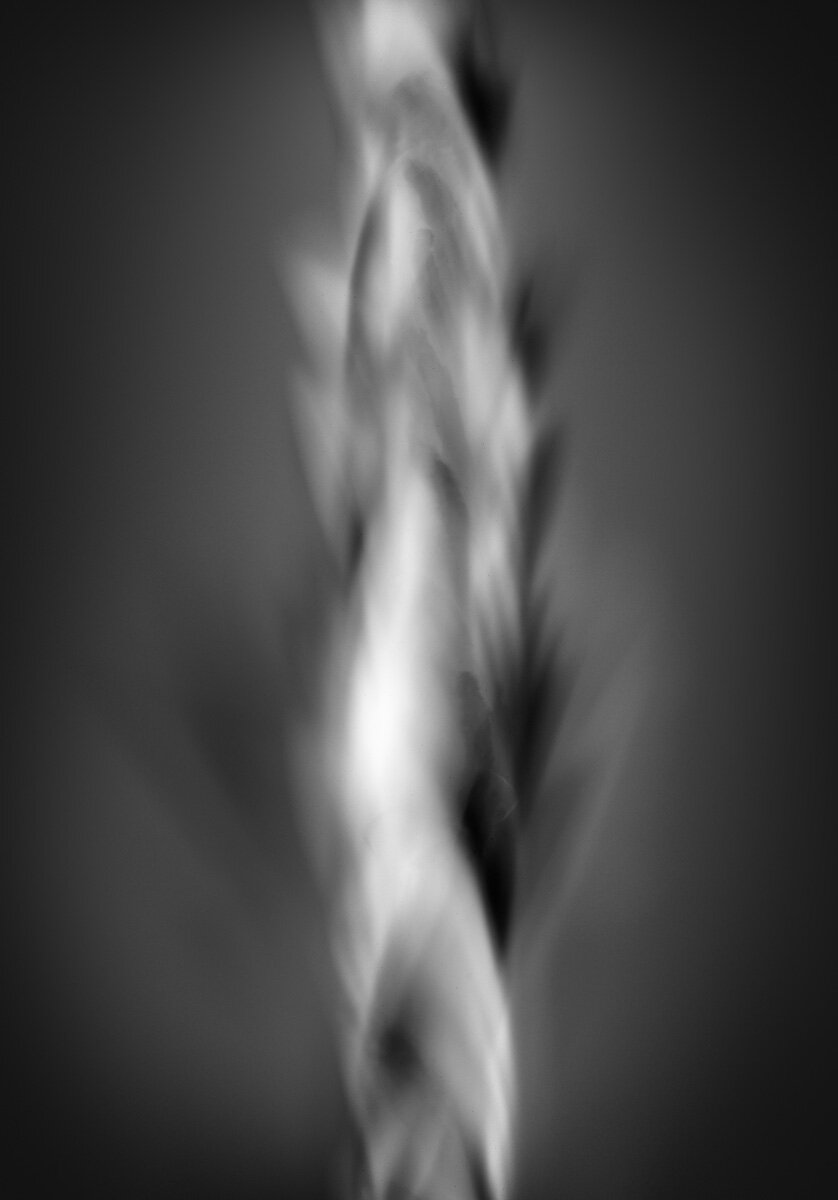Faraday/Sugimoto Candles
[Exerted and revised from a post on my blog, A Bigger Camera.]
Say you are at an open bedroom window. Let’s say it is not only open but open a precise amount. Let’s also say that the dimensions of the window and the contours of its frame are also known precisely, modeled enough for any engineer. Let’s say further that the window screen is also characterized as exactly like the rest, everything measured and known.
Now we place a candle on a small table in front of the window, its size and position minutely noted, the materials making up the candle are ensured to be uniform from one candle to the next, the wicks identical in all ways.
Everything so far is a constant, there’s no variation here at all until we introduce that variation, until we introduce the flame to the tip of the wick. Now the flame will flicker and dance in the faint, gentle breeze. As it burns down the candle the flame will not only flicker but will flicker across a period of time, its light recorded by a camera placed in front of it, measuring it, capturing that variation with the thought that the shape and intensity of the flame, as it moves downward, will keep intact, difficult as it might be to decipher, the record of the movement of the wind.
At some point it occurred to me that the flame was a three-dimensional shape and wouldn’t it be better if I had two cameras, one perpendicular to the other, to capture the flame from two fixed positions, blue-tape X’s marking the positions of the heavy-duty tripod legs, carefully chosen to maintain the measured geometric relationship of one camera’s view to the other. Then it occurred to me that I could overlay one image atop the other and, if I used the right blending technique, both sets of data might be preserved in one combined image.
The project was going to be called Faraday Candles, after Michal Faraday, who wrote a lovely essay on scientific thinking, using a burning candle as an example. Then, to my dismay, I had to change the name. I had discovered that my idea wasn’t mine.
I first encountered Sugimoto’s work at the Akron Art Museum years before, which displayed an image from his series of movie theaters, their screens all glowing white. It was an image of the Akron Civic Theater, appropriately enough, just a short walk away, and I remember the wall text said something deep and semi-incomprehensible–later I learned that Sugimoto had simply left the shutter open during the entire time the film was running (intellectually not to distant from my wind data project, as it turns out). He also did a series of famous seascapes which more people have seen by far than any of his other works as one of them was used for the cover of a U2 album. There were dioramas of animals and prehistoric man and wax museum figures but it isn’t until I had started shooting the images for my Faraday Candles project that I found his candles.
There they are, In Praise of Shadow, a red-colored photograph of an installation in 1998 of his work, printed in 2010’s monograph Hiroshi Sugimoto, 8×10 negatives held head-high on stands, a small bright light illuminating them and casting large shadows of the negatives upon the wall. The image on each negative is a candle, allowed to burn all the way down during a long exposure. He made regular prints of them, too.
Here’s how Sugimoto introduces this work:
Japanese novelist Jun’ichiro Tanizaki disdained the “violent” artificial light wrought by modern civilization. I, too, am an anachronist: rather than live at the cutting edge of the contemporary, I feel more at ease in the absent past.
Domesticating fire marks humankind’s ascendancy over other species. For tens of thousands of years, we have illuminated the night with flames. Reflecting upon this, I decided to record “the life of a candle.” Late one midsummer night, I threw open the windows, and invited in the night breeze. Lighting a candle, I opened my camera lens. After several hours of wavering in the breeze, the candle burned out. Savoring the dark, I slowly closed the shutter. The candle’s life varied on any given night―short, intensely burning nights and long, constantly glowing nights―each different, yet equally lovely in its afterglow.
I couldn’t believe it. I just couldn’t believe it. His candles weren’t the same as my candles–like my own children whom I love more than anyone else’s children, my candle images were not only different but better–but they were close, oh so very close. Days passed as I pondered how to modify the project or maybe rethink the thing from scratch. But it was too late–the project had fixed in my head and could not be undone. I could abandon it, like leaving a baby under a tree in the woods, or I could move forward. So I moved forward, renaming the project Faraday/Sugimoto Candles to acknowledge the weird revisiting of that same artistic space.
